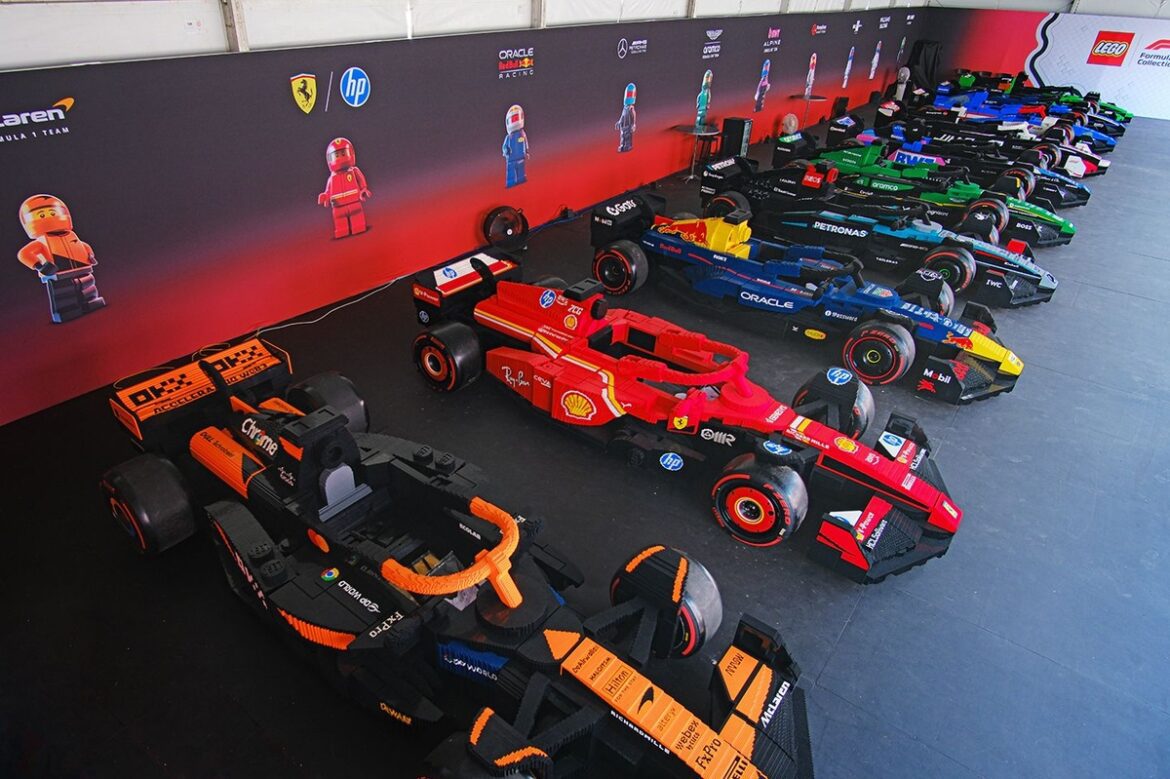LEGO Formula 1 Cars Make a Splash at the Miami Grand Prix
Formula 1 is consistently finding innovative ways to engage its American audience, and the recent Miami Grand Prix showcased one of the most exciting initiatives yet: a driver parade featuring life-sized, fully functional LEGO cars. This creative twist replaced the traditional driver parade truck, adding a unique flair to the event that resonated well with fans.
Each participating team was represented by a stunningly crafted LEGO car, meticulously designed to mirror their real-world counterparts. These replicas are not just for show; they are fully drivable and constructed from approximately 400,000 LEGO bricks. Each vehicle showcases the team’s distinct colors, complete with accurate liveries and appropriate sponsorship branding, making them a true representation of the F1 teams.
As part of a multi-year collaboration between Formula 1 and LEGO, which was announced last September, these LEGO cars took to the Miami Gardens track for a complete 5.4-kilometer lap. This partnership aims to enhance the experience for fans by bringing them closer to the exhilarating world of motorsport through the fun and creativity that LEGO embodies.
Julia Goldin, the Chief Product and Marketing Officer at LEGO Group, expressed her enthusiasm about this collaboration. She stated, “At LEGO Group, we have a proud history of recreating numerous Formula 1 cars in LEGO form, and we believe this new partnership will allow us to bring the excitement of this sport even closer to all fans. Through LEGO play and building, we aim to celebrate their love for motorsport in more immersive and engaging ways.”
The anticipation reached a peak as renowned drivers such as Lewis Hamilton, Max Verstappen, and Lando Norris took the track in their LEGO counterparts. Each car, weighing around 1,000 kilograms, was powered by electric units capable of reaching speeds of up to 20 kilometers per hour, all while riding on authentic Pirelli tires.
The atmosphere was electric as the drivers navigated the track in their LEGO vehicles. Even after a rain shower, the excitement was palpable, and the drivers displayed their competitive spirits. George Russell humorously requested to use the LEGO cars as "bumper cars," showcasing the playful side of the event. As the drivers waved to enthusiastic fans, some even attempted to overtake one another, demonstrating that the competitive nature of F1 remained, even in this whimsical setting.
Lewis Hamilton reflected on the experience, stating, “That was the most fun drivers parade we’ve ever had. Some dirty driving made it great fun!” Max Verstappen chimed in, “I think they will need to sweep the track; there’s some LEGO debris! We might have been a bit slow in terms of top speed, but it’s more important that they clean the track!”
The LEGO cars were inspired by the LEGO Speed Champions series and were brought to life by a talented team of 26 designers and engineers based at LEGO’s facility in Kladno, Czech Republic. Their dedication to detail ensured that each car was as close to the real thing as possible, creating a memorable visual experience for fans and participants alike.
This initiative reflects a broader trend within Formula 1 to engage younger audiences and families, especially in markets like the United States, where the sport is rapidly growing in popularity. By intertwining the playful nature of LEGO with the high-octane world of F1, the sport is not only attracting seasoned fans but also nurturing a new generation of enthusiasts who may one day follow in the footsteps of their racing heroes.
The partnership with LEGO is not merely a promotional gimmick; it’s a strategic move to enhance the overall fan experience. By introducing elements that resonate with both children and adults, Formula 1 is carving out a niche that combines entertainment, creativity, and the thrill of racing. The LEGO cars serve as a bridge between the world of racing and the imaginative play that LEGO encourages, fostering a unique connection with the sport.
Fans attending the Miami Grand Prix were treated to more than just the spectacle of high-speed racing; they witnessed a celebration of creativity and innovation. From the vibrant colors of the LEGO cars to the excitement of the parade lap, the event highlighted how Formula 1 is evolving to meet the interests of its diverse fanbase.
As the sport continues to expand its footprint in the United States, initiatives like the LEGO driver parade are crucial. They not only enhance the experience for those in attendance but also create buzz and excitement that can be shared across social media platforms, attracting even more viewers to the sport.
The collaboration between F1 and LEGO is set to unfold further in the coming years, with promises of more engaging activities and experiences for fans. As both brands continue to innovate, they are likely to introduce new ways for fans to connect with the sport, making it more accessible and enjoyable for audiences of all ages.
The Miami Grand Prix was a perfect showcase of how creativity and racing can intertwine. The vibrant atmosphere, the laughter of drivers, and the cheers of fans combined to create an unforgettable experience. As fans left the event, they carried with them not just memories of high-speed action but also the joy of seeing their favorite drivers in a completely new light.
Through this partnership, LEGO and Formula 1 are not just celebrating the sport; they are also honoring the imagination and creativity that both brands embody. This innovative approach is sure to leave a lasting impact on fans and the future of motorsport, ensuring that the excitement of racing continues to inspire generations to come.
